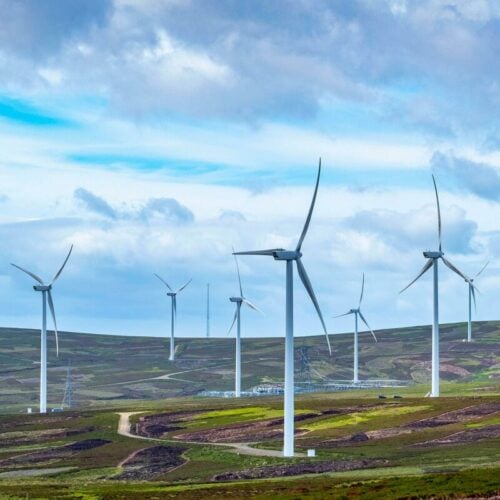Research published by Scottish and Southern Electricity Networks’ (SSEN) warning that unprecedented growth in green tech must be met with exponential growth in networks to support the Net Zero transition.
The annual Distribution Future Energy Scenarios (DFES) report gives granular detail of the emergence of new technologies on its distribution networks in Southern England and Scotland. SSEN says that the current price control period which runs until 2028 “will be critical in building the infrastructure to support UK and Scottish Governments’ legally binding climate change targets.”
The energy and cost of living crises have provided incentives for richer people to switch to low carbon technologies like EVs, heat pumps and solar. This increase in domestic connections allows SSEN to project that by 2030, SSEN’s networks will need to be able to accommodate nearly 2 million EVs (up from under 100,000 today), almost 700,000 heat pumps (a 1,300% increase from today), a big increase in hydrogen energy production from 2MW to 242MW, and a 2,000% increase in battery storage.
🌍🔌SSEN & @Regen_insight research reveals #NetZero 2030 forecasts for our networks:
— SSEN Innovation (@SSEN_FN) April 19, 2023
🚘2M electric vehicles
🏠700k heat pumps
⚡242MW hydrogen electrolysis
🔋2,000%+ battery storage growth
We're preparing our network for the green future: https://t.co/WchEzwgTCa #DFES
“SSEN’s licence area in central southern England has some of the best solar irradiance in the UK so it is unsurprising that solar generation already accounts for significant levels of electricity generation in the area, but this will almost triple by 2030,” the company said in a statement.
The South Central region of England covered by SSEN will see large battery storage projects connecting to the network, with one 100MW battery already having been connected to the network and a request to increase its capacity by 50%.
In the north of Scotland, there has been a 57% increase in EVs over the past year, with 1% of cars on roads now electric. SSEN already has 2.1GW of onshore wind in Scotland, and total renewable generation is predicted to treble by 2030. Battery storage, of which SSEN has just 8MW currently, is projected to increase to 1.9GW by 2030.
Sustainable energy experts Regen who wrote the report, use National Grid’s Future Energy Scenarios as a framework to forecast four potential outcomes. Baseline figures are taken from 2021.
“Our annual DFES reports are an essential part of the evidence base we use to make sure our network is ready for a net zero future. This year’s findings illustrate how we must step up to the challenge to ensure our business and our networks are ready for the colossal changes that are already happening,” said Adam Bain, whole system development manager at SSEN.
Tamsyn Lonsdale-Smith, senior energy analyst at Regen said, “The DFES are a keystone piece of analysis looking at the uptake of both demand-side technologies, such as EV chargers and heat pumps, and large-scale generation and storage projects. Due to an increase in project developer activity in the past year, we’ve seen a significant growth in the number of new projects seeking to connect to the distribution network since the 2021 DFES were completed. This includes significant solar PV projects in Southern England, onshore wind projects in the North of Scotland and a larger-than-ever pipeline of prospective battery projects across both licence areas.”
Lonsdale-Smith cautioned that how much of the current pipeline will be built will depend on “planning, project finance and market activity.”





